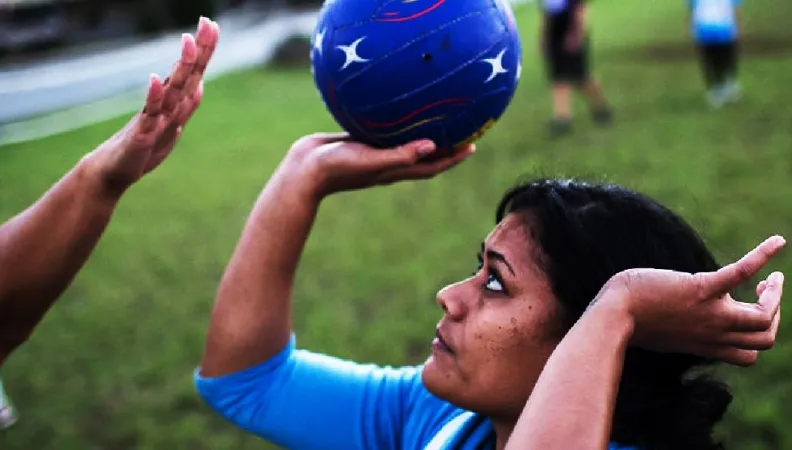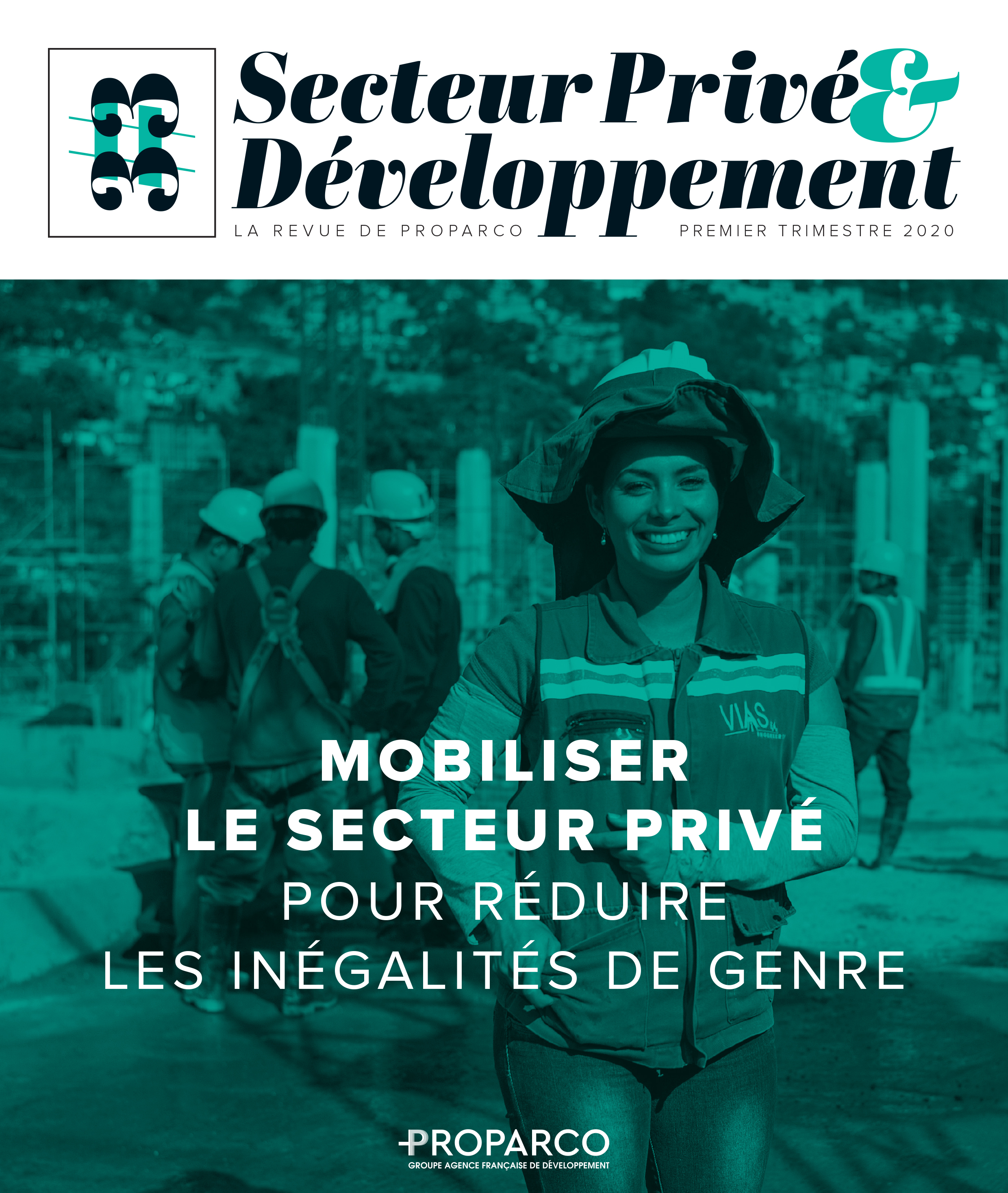Share the page
What the 2X Challenge is teaching us about gender lens investing
Published on
Anne-Marie Levesque Chair of the 2XChallenge working group and Gender l FinDev Canada


Private Sector & Development #33 - Harnessing the private sector to reduce gender inequality
Despite increased awareness since the adoption of the Beijing Declaration and the progress made, women worldwide still face a multitude of inequalities. The 33rd Private Sector & Development focuses on the role of the private sector in reducing gender inequalities.
Almost two years after its launch, we look back at the 2X Challenge initiative, which aims to increase capital flows towards private sector initiatives that benefit women.
The 2X Challenge, launched during the 2018 G7 Summit in Canada, started with a simple, yet powerful question: Can the development finance institutions (DFIs) of the G7 countries collectively mobilize US $3 billion by the end of 2020 to invest in women? As we enter the final year of this initial commitment, I am very proud to share some results, and a few key lessons we have learned along the way.
MAKING FINANCE WORK FOR WOMEN
Economic participation and opportunity is one of the areas where inequalities between women and men are the widest globally. According to the World Economic Forum’s most recent Global Gender Gap Report, this is the only area where gender gaps have recently increased. We can now expect to wait another 257 years before gender parity can be achieved in the economic sphere1. In practice, these economic gender gaps mean that women are less present than men on the labour market, generally earn less, are concentrated in lowerskilled positions and sectors, and have fewer prospects for advancement or growing their businesses than men.
Women entrepreneurs for example face a large and well-documented finance gap: over US $300 billion for small to medium-sized enterprises (SMEs), which means approximately 70% of women-owned SMEs cannot obtain the financing they need2. If we include microentrepreneurs in this calculation, the total credit gap for women is estimated to be valued at US $1.7 trillion3. As the 257 year figure tells us, the status quo is not an option if we want to see meaningful change within this generation. Achieving gender parity requires a concerted effort from various actors – governments, private sector, civil society – and investors can play a significant role by choosing to allocate their capital to opportunities that contribute to women’s economic empowerment. The 2X Challenge is our public pledge to harness the power of finance for gender equality by investing in women’s access to finance, quality jobs, and products and services that benefit them.
YES, WE CAN – AND WE ARE JUST GETTING STARTED
A year and a half after the launch, I am very proud to say that 2X Challenge is making significant strides in moving capital towards women’s economic empowerment. According to our estimates, 2X Challenge members have so far committed and mobilized US $2.47 billion in investments that will benefit women. In 2019, we also welcomed 6 new DFI members, and gained one Multilateral Development Bank (MDB) supporter, expanding the initiative well beyond the G7 countries4. To help us decide what counts as a “good” investment for women, we developed the 2X Criteria,5 which assess an investee’s contribution to women’s access to entrepreneurship, leadership positions, quality employment, and products and services that specifically or disproportionately benefit women. One important lesson from our first 18 months is the invaluable contribution of the 2X Criteria to the 2X Challenge, but also the field of gender-lens investing more broadly. This simple, yet robust, framework is fast becoming the go-to standard for what it means to invest in women and is now being adopted by DFIs and other investors at an impressive rate. While there is a lot to be proud of, 2X Challenge members also recognize we have only scratched the surface of what we can do. When we analyze our achievements to date, we see that take-up for the 2X Challenge is higher in certain sectors, such as financial services, than in others, like renewable energy. While this is great news in the efforts to close the gap in access to finance, this tells us there is still much to do in order to encourage gender inclusion in companies or industries where women are typically under-represented, which is key if we want to engender meaningful change and close economic gender gaps. Looking ahead, DFIs want to increase the amounts of capital we are mobilizing towards investments that benefit women, particularly from the private sector. We also want to encourage more co-investments between 2X members are other like-minded investors, to send a clear signal to the market that gender lens investors mean business. This will require deepening internal processes and mainstreaming gender in how we build pipelines, carry out due diligence and structure deals, all the way to evaluating risk, managing our portfolio, and impact measurement and reporting.
REACHING WOMEN ENTREPRENEURS WITH 2X INVEST2IMPACT
Another key lesson from these first 18 months is that the 2X Challenge platform is an incredible space to test new ideas and innovate. One idea we wanted to test was that there were women entrepreneurs in our markets that were ready for, but could not access investment capital, and that there was an opportunity as gender lens investors to be more proactive in reaching out to them. As a result, FinDev Canada, together with our 2X partners at OPIC, CDC Group, Proparco, and the Mastercard Foundation, launched in 2019 2X Invest2Impact,6 a business competition aimed at growth-ready, womenowned business in East Africa. The competition received nearly 800 entries, spread across Kenya, Ethiopia, Uganda, Tanzania and Rwanda, and culminated in the selection of 100 winners, the first ever Invest2Impact cohort. In November 2019, these 100 inspiring women entrepreneurs came together in Kigali, Rwanda, to celebrate their success and the beginning of the Invest2Impact program. Four entrepreneurs also received a cash prize for their exceptional impact on women’s economic empowerment, youth employment, climate action and innovation. With four different tracks aimed at different types of businesses, the Invest2Impact program will offer throughout 2020 an innovative and personalized approach to providing support and encouraging the growth of these businesses, including exposure to various types of investors, investment-readiness support and capacity building. The 2X Invest2Impact initiative has taught us that there is value in having a very focused approach on pipeline building and reaching out directly to women entrepreneurs in our markets. Through this, we are gathering important lessons on supporting women’s entrepreneurship in East Africa and piloting an investment prospecting model that could be replicated in other regions and markets. In 2020 we aim to share the lessons learned from this experience and further contribute to making finance work for women entrepreneurs.
WHERE TO GO FROM HERE?
As we enter the last year of our collective commitment to foster women’s economic empowerment, it has become evident that we need to be more ambitious, challenge ourselves even more and ramp up the pace of our efforts to pump unprecedented amounts of capital into gender equality. I strongly believe that partnerships are key to getting more investors onboard with our initiative and our vision. Having more partners join the 2X Challenge will allow us to reach higher, be bolder, and innovate in our approach to closing the gender gap. We do not have all the answers, but with partnerships we can take risks and find new ways of doing business. Only through partnerships can we hope to disrupt “business as usual” and bring the change we need to close the gender gap.
While 2020 may be the final year of the initial 2X commitment, in many ways it is also just the beginning. The 2X Challenge is now a movement which has inspired other investors to put more money in the hands of women. If we want to achieve the United Nations’ 2030 Agenda, we need to accelerate the pace of progress towards gender equality, because women are key to sustainable development.
1 World Economic Forum, The Global Gender Gap Report 2020. More information: http://bit.ly/36TsP8F
2 World Bank, Women-owned SMEs : a business opportunity for financial institutions - a market and credit gap assessment and IFC’s portfolio gender baseline, 2017. More information: http://bit.ly/2ReT6HT
3 International Finance Corporation (IFC), MSME Finance Gap. Assessment of the shortfalls and opportunities in financing micro, small and medium enterprises in emerging markets, 2017. More information: http://bit.ly/2QR48Eg
4 The founding members of the 2X Challenge are: CDC Group, CDP, DEG, JBIC & JICA, FinDev Canada, OPIC and PROPARCO. The additional members that joined in 2019 are: Bio-Invest, Finnfund, FMO, IFU, SIFEM and Swedfund. In October 2019 the European Investment Bank (EIB) endorsed the 2X Criteria.
5 https://www.2xchallenge.org/criteria 6 https://invest2impact.africa/

